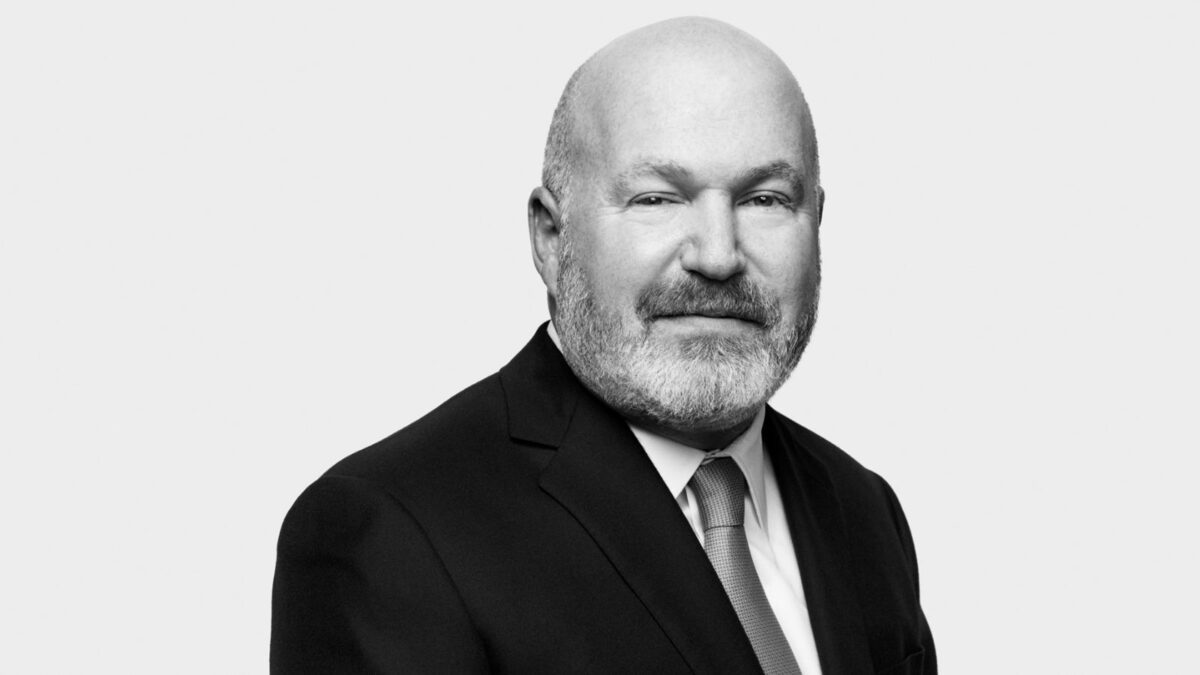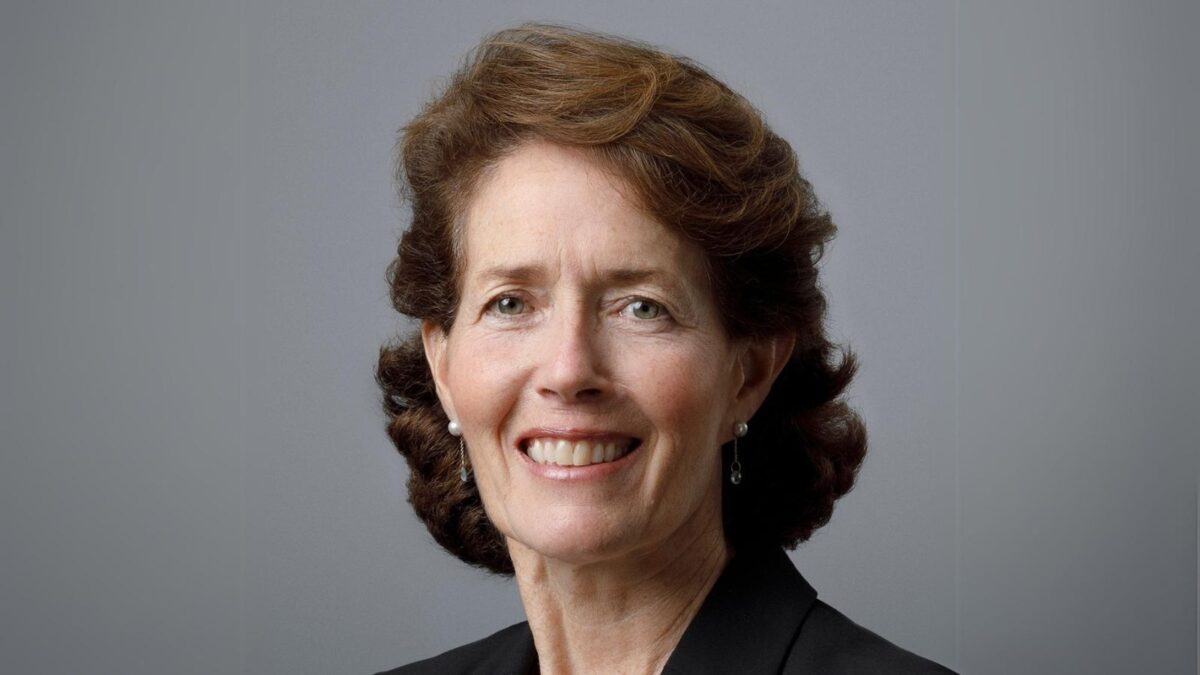How we got to where we are in funds management
by Greg Bright
Mark Lazberger has temporarily checked out of the investment management industry, taking his first ‘sabbatical’ in about 37 years. He says he is likely to turn up in another role again, although he is in no hurry to do so. Tracing his career to date is like tracing the history of funds management.
Lazberger has held several of the most senior executive roles in funds management since the early 1990s, including leading State Street Global Advisors’ from near its birth in Australia, followed by helping its expansions in Asia and the UK, and, for the past 10 years, as chief executive of Colonial First State Global Asset Management. He resigned from CFS GAM in September last year and left the firm in December.
His wife, Anne, he says, indicated that while she was delighted to have a mid-week lunch with him from time to time, she was not keen to do so every single day. He gets the message.
Putting the international roles at SSGA aside for a moment, Lazberger presided over that firm becoming the largest institutional investment manager in Australia for a time and then, which was probably more difficult, the internationalisation of CFS GAM, which is now a truly global Australian-based funds management firm.
A lot of aspects of his career reflect the development of funds management in Australia and overseas. The legislated cashflow for big super fund clients, starting with Award Super in 1986 and followed by the Superannuation Guarantee in 1993, meant strong growth for managers who could put together a reasonable offering.
The small size of the Australian share and bond markets also prompted super funds, which became very sophisticated very quickly, and their managers, to allow increasingly complex funds to seek more offshore investments.
The banks and globalisation
Lazberger’s exit from CFS GAM in December also follows other, more recent, trends and changes in the world of funds management and superannuation. The most relevant of these from a personal viewpoint for him is the divestment or planned divestment of their big funds management businesses by the major banks.
Both Commonwealth Bank and NAB announced last year that they were pursuing divestment options. In Commonwealth’s case, it at first looked at an IPO for CFS GAM, which would have represented an exciting new challenge for its chief executive, Lazberger, but by mid-year, the bank decided to include the wealth management and mortgage broking arms. The new entity, temporarily named NewCo, would hold interests in the separately listed Count Plus and Mortgage Choice. This was not so exciting for someone with Lazberger’s purer funds management background.
He says: “I saw the move as having its own strategic logic and while it might be an opportunity, after a period of reflection, I thought it was probably in the best interests of the new company to have a change of leadership… The strategy [for CFS GAM] had always been to be build a high quality active global manager.”
Commonwealth then announced, on October 30 – more than a month after Lazberger’s resignation announcement – that it would sell CFS GAM to Mitsubishi UFJ Financial Group for $4.1 billion but continue to look at other ways to divest its wealth management and mortgage broking businesses.
When Lazberger returned home from his State Street role in London to take up the CFS GAM chief executive position, in 2008, the fund manager had about 40 per cent of its revenue outside of Australia, notwithstanding a sizable UK operation in both London and Edinburgh, and about 60 per cent domestic. When he left late last year, the split was almost 80 per cent offshore and the remainder in Australia.
There are only two ways a big active institutional manager, such as CFS GAM, can continue to grow its business once it gets to a certain size: expand the range of product lines, such as introducing beta strategies and perhaps offering your services to wholesale distributors, such as other banks; or to go international. Both have their risks.
CFS, which now has about $215 billion under management, had embarked on the globalisation route under Chris Cuffe in the late 1990s and early 2000s, with his senior lieutenants such as Rob Adams (now the chief executive of Perpetual) and Matt Gaden (acting chief executive of Janus Henderson in Australia) leading the charge in the UK.
A highlight was the takeout of a specialist emerging markets team from Edinburgh-based Stewart Ivory, led by Angus Tulloch, an entertaining Scottish national who retired in September 2017. Lazberger formed two new divisions with their own identities to house the former Stewart Ivory team in 2015 and did the same for its Hong Kong-based Asian team, in order to protect their “boutique heritage”. The Edinburgh company was renamed Stewart Investors and the Hong Kong-headquartered team First State Stewart Asia.
Lazberger says: “We continued to globalise the business and strengthen international management. When I joined there was only one direct report to the CEO outside of Australia. Now, the majority are. With the right approach and the right people you can globalise.”
He says that, while the Australian market has mandated growth, thanks to the Superannuation Guarantee, and looks attractive, “it’s really competitive and tough”. He believes it is, in fact, the most competitive market in the world. And at the institutional level it’s not necessarily growing as fast as you think – at least for external fund managers – because of the trend for big super funds to internalise more of their investment capabilities.
Westpac had a similar issue with capacity for its old BT subsidiary, which it spun off through an IPO and gradually reduced its holding. The associate company, now called Pendal Group, made the significant acquisition of UK-based JO Hambros in 2011 and subsequently expanded this in North America.
Westpac has kept its wealth management and platform business, under the BT Financial Group banner, and has not yet confirmed any future plans for this, notwithstanding the general view that separation of ownership between banking and wealth management may well be a final recommendation of the Hayne Royal Commission, whose final report is due in February.
NAB, on the other hand, has announced that it is looking at options for MLC, which is both wealth manager and multi-manager but no longer “manufactures” investment management. MLC chief executive Geoff Lloyd, who ran Perpetual up until early last year, has had his own challenges with globalisation. At Perpetual, he inherited from his predecessors two failed attempts to internationalise: the first an ill-fated buyout of the Bank of Ireland’s global equities team, followed by an attempt at expansion into Asia, which the board supposedly vetoed. Perpetual decided to add to its international capability from Australia through a new range of strategies. In the retail market, the two most successful global managers of the past few years are both Australian – Platinum and Magellan. Australian super funds, however, have largely retained offshore-based international managers. The fee compression in the Australian institutional market is probably more extreme than it is overseas.
To complete the picture, ANZ outsourced its manufacturing to Russell Investments in the 1990s and last year announced it would sell its wealth management arm to IOOF. Commentators have suggested this deal, yet to be consummated, has potentially been damaged by fallout from the Royal Commission.
The early days
When Lazberger joined SSGA in Sydney in 1991 there were three others plus an assistant in its fledgling office, including Bernard Reilly, who followed him on a long and successful international career with the firm, both as regional head in Asia and a global role in Boston.
Lazberger had actually joined State Street’s treasury arm first and was recruited to funds management by Boston-based SSGA CEO, Nick Lopardo. Gus Fleites, on assignment from Boston, had set up a small office in 1991 but wanted to return to Boston after his short stint in Australia. Lazberger became Australian managing director on Fleites’ return home in January 1993. In the early 1990s total funds under management from the Australian and NZ markets was small, about $400 million. By 2000 the total stood at over $80 billion.
Lazberger worked not only on building the Australian business over the next 10 years, he also worked on his professional development, becoming one of the then-rare Australian fund managers with a CFA designation. He was later to become instrumental in the CFAs setting up a Sydney chapter and, later still, invited to be a governor on the CFA Institute’s global Board of Governors.
State Street set up its global custody business in Australia in 1986, the same year that Frank Russell Company (now Russell Investments) became the first specialist investment consulting firm in Australia and the year that “superannuation for the workers” got underway under the wages Accord between the Hawke Government and the ACTU. State Street pioneered master custody, while Russell pioneered the use of sector specialist managers.
State Street’s custody business grew very fast, followed by its treasury and FX business after the floating of the Australian dollar and relaxation of international investing limits. Funds management was a little slower off the mark.
“I felt like a franchise had been granted to me,” Lazberger says. “The objective was to build a client base from scratch, but we had access to strong global capabilities and we had to make sure that they could be accessed by everyone. In large part due to the introduction of the FIF legislation we established our own unit trusts here to offer our services in a cost-efficient way. And we wanted to apply that to every asset class.”
In 1986 there were more than 4,000 corporate super funds. Now, due largely to the growth in industry and other not-for-profit super funds, there are just a handful. And most that have remained have outsourced all their investment decisions. (Of course, big commercial funds and, subsequently, SMSFs also took their toll on the corporates, as universal super tended to detract from any industrial relations benefit for a company having its own fund.)
SSGA distinguished itself from the dominant fundamental managers of the day, such as AMP, BT, National Mutual a few others, by being a global quant manager, at first offering plain-vanilla index strategies and then active-quant strategies in order to make the business more resilient. “I lost count of the number of times I had to talk to clients about indexing,” Lazberger says, “when there were so many other things we could offer them.”
Most recently active quant has morphed into smart beta and factor-oriented investing, as well as a range of outcome-oriented and protected and multi-strategy strategies and funds.
The lack of a well-known brand name in Australia meant wholesale (financial planners) and retail (direct investors) were going to be difficult. “Boston [head office] hadn’t given me a blank cheque,” Lazberger says.
By 2001 business growth had given the firm the confidence and wherewithal to become the first manager to launch an Australian ETF, starting with top 50 and top 200 ASX-listed equities funds and a listed property ETF.
In 2001 he was appointed chief executive of State Street’s Japanese operation and head of SSGA’s Asia-Pacific operation, which he ran for four years, and then head of UK, Europe and the Middle East, based in London. In 2006 he was named as president of SSGA’s international business in London.
Sometime in April 2008, he says, he received an unsolicited phone call from a recruiter from Egon Zehnder, the global search firm. The person said: “I want to talk to you about an opportunity, but before you hang up can you at least have a think about it? He described the role [chief executive of CFS GAM back in Sydney]. My initial inclination was to remain in London with SSGA but after mentioning it, almost in passing, to my wife it was clear that she was interested in returning home. No surprise, I showed more interest and ended up being offered the job.”
It was also a big job at a time – the middle of the global financial crisis – when good jobs anywhere were few and far between, especially in smaller markets such as Australia. State Street itself had announced a lot of redundancies around the world. Lazberger resigned to Boston chief executive Scott Powers a few weeks later and left State Street with mixed feelings on August 31, 2008. “State Street was a fine organisation and treated me very well,” he says.
The future
Now, as then, it feels like the right time to move on, he says, but not without genuine pangs. “We’ve reshaped the [CFS GAM] business and built relationships all around the world. Our performance in equities is competitive and has done what we told our clients we’d do, and we’ve built other high-quality capabilities over the years such as direct infrastructure,” he says.
“A big theme over the next 10 or more years will be how the firm builds on its expertise in investing in China and India as those markets are destined to become more significant parts of client portfolios.”
Perhaps prompted by reminiscing on the early days of SSGA, he says he would think about a boutique-style operation though has little interest in becoming a non-executive director on listed company boards. “I’m far more interested in seeing if I can be a part of something that I can help develop and grow. I like initiating changes to produce good outcomes. I really like the business of investment management.”
In August 2018 Lazberger came to the end of his final term as a governor of the CFA Institute. He is keen to maintain his connection with the CFAs and CFA Institute, having served two three-year terms as a governor and also served as the inaugural chair of the Sydney CFA Society (now united as an Australia-wide body).
He now has more time to devote to the cause and believes that the investment management profession will be placed under more and more scrutiny in coming years. “I strongly believe the CFA Institute and its membership of CFAs have an important role to play to ensure professional standards are maintained at all times.”
The investment management part of the financial services industry largely escaped criticism during the Royal Commission hearings last year, as did the big not-for-profit super funds. It was the wealth, advice and insurance areas which drew commissioner Hayne’s and the public’s ire. Nevertheless, as the head of Commonwealth Bank’s investment management subsidiary, Lazberger was closer to the action than most other managers.
He believes that the Royal Commission provided an important punctuation point in the history of the industry. “The industry needs to use the experience in a sensible way, he says, accept the criticisms and, more fundamentally, accept responsibility for what has happened… Anyone who has been in the industry for a while didn’t need a Royal Commission to understand the issues.”
He says that professionals need to understand that there are professional standards to adhere to. If that happens across the board the industry will operate better.
“Solely relying on politicians to come up with a new framework would be a missed opportunity,” he says. He believes that the industry needs to make a commitment to putting its clients first and admit that it has to fix things so that the system can operate better than it has and deliver what is expected to Australians.









